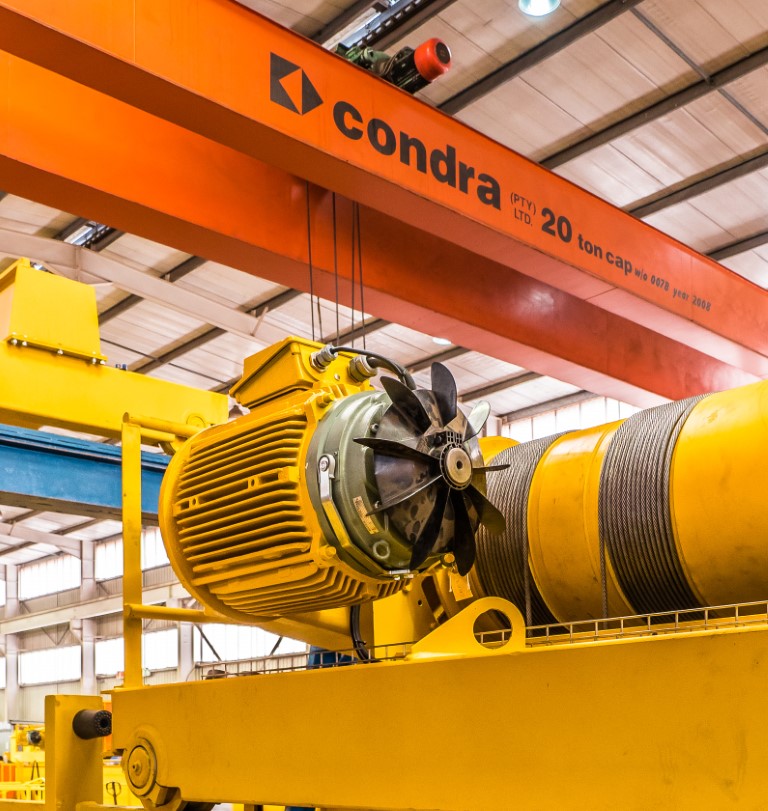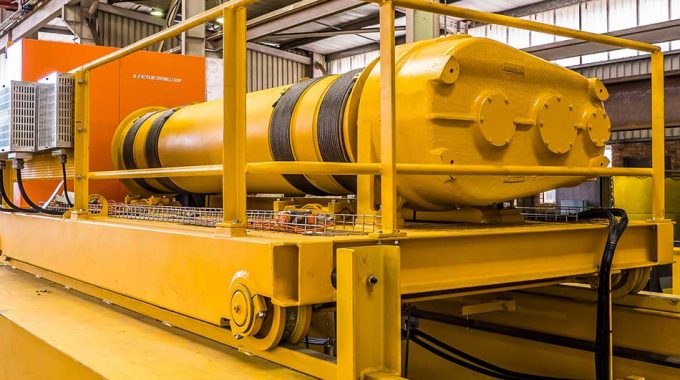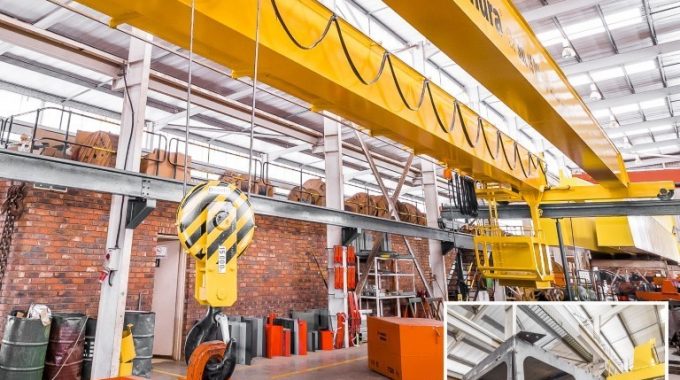MILL TURNS TO CONDRA TO RECOVER LOST PRODUCTION
Price should never be allowed to unduly influence the purchase decision. A wrong choice of capital equipment can prove costly not only in downtime and lost production, but also in unnecessarily increased expenditure when new equipment must be bought to replace the failed original.
This caveat comes from Marc Kleiner, managing director of crane manufacturer Condra, who says that buyers should exercise caution if they notice tender appraisal paying undue attention to price rather than product capability and overall lifetime cost.
He was commenting on a recent order to manufacture an overhead crane as replacement for a competitor’s machine that failed inspection and load testing. The rapidly deteriorating crane is now adversely affecting production in the millhouse where it is installed.
The order for the replacement was placed by Natal Cranes, authorised Condra distributor in KwaZulu-Natal and the firm behind the winning tender to replace the failed machine. In the same millhouse, Natal Cranes has been servicing a 10-ton Condra maintenance crane installed in 1987 on the same gantry as the rival crane now needing replacement. The 10-tonner is still working reliably after 36 years.
Condra received the order on June 6 and is committed to a delivery date of six weeks from drawing approval. After installation and commissioning, the failed crane will be scrapped.

The new crane will be a physically large machine of double-girder electric overhead design, spanning 21 metres and equipped with two hoists: a 35-ton main unit and 5 ton auxiliary, both mounted on the same crab and delivering lifting heights of 15 and 16 metres respectively.
Maximum long travel speed will be 31 metres per minute, with 15,4 m/min on the cross travel. Control will be by mobile pendant.
The crane will feature a full-length walkway, dual-speed controls on all functions, binder brakes, stainless steel panels and IP65 dust and waterproofing for the motors. Paint finish will be to high-specification anti-corrosion standard.
Commenting on the order, Kleiner said the mill’s need to replace a failed machine was a good illustration of lost production and additional expenditure being the direct result of a buying process where price exerted undue influence.
“The old adage that the proof of the pudding is in the eating is relevant even in the market for overhead cranes,” he quipped.
“Condra’s product quite simply has more depth and durability. Our sales pitch might sometimes not be as polished as our rivals, but the mettle of our products is well proven, witness Condra’s 10-tonner on the same gantry as the failed crane, and still working even though it was installed almost forty years ago, years before the failed machine.”
A complete range of spare parts remains readily available, he added.
Kleiner explained that Condra’s tender price could in many cases not be the lowest, because the product represented a first-rate, top-quality offering.
“But the longevity of our installations around the world justifies the investment made in them. These are robust, reliable cranes.”

Condra has in recent years captured an increasing share of the lifting equipment market in Africa south of the Sahara, with the company’s success in securing orders against determined competition from European rivals seemingly set to continue.
Company management claims the highest local content of any overhead crane manufacturer in the region. The product range encompasses capacities from 250 kg to 500 tons with a fully automated option offered on all machines. Manufacture is to ISO 9000 standard.
Research and development at the company is ongoing and includes a commitment to environmental improvement. Design engineers are currently researching the effect of different rotor and rotor winding configurations – silumin among them – on motor torque and efficiency, the aim being to contribute to environmental improvement by reducing energy input requirements.
The company has additionally installed solar panels at its Germiston and Cape Town factories to provide an estimated 70 percent of electricity requirements.
This caveat comes from Marc Kleiner, managing director of crane manufacturer Condra, who says that buyers should exercise caution if they notice tender appraisal paying undue attention to price rather than product capability and overall lifetime cost.
He was commenting on a recent order to manufacture an overhead crane as replacement for a competitor’s machine that failed inspection and load testing. The rapidly deteriorating crane is now adversely affecting production in the millhouse where it is installed.
The order for the replacement was placed by Natal Cranes, authorised Condra distributor in KwaZulu-Natal and the firm behind the winning tender to replace the failed machine. In the same millhouse, Natal Cranes has been servicing a 10-ton Condra maintenance crane installed in 1987 on the same gantry as the rival crane now needing replacement. The 10-tonner is still working reliably after 36 years.
Condra received the order on June 6 and is committed to a delivery date of six weeks from drawing approval. After installation and commissioning, the failed crane will be scrapped.

OLYMPUS DIGITAL CAMERA
The new crane will be a physically large machine of double-girder electric overhead design, spanning 21 metres and equipped with two hoists: a 35-ton main unit and 5 ton auxiliary, both mounted on the same crab and delivering lifting heights of 15 and 16 metres respectively.
Maximum long travel speed will be 31 metres per minute, with 15,4 m/min on the cross travel. Control will be by mobile pendant.
The crane will feature a full-length walkway, dual-speed controls on all functions, binder brakes, stainless steel panels and IP65 dust and waterproofing for the motors. Paint finish will be to high-specification anti-corrosion standard.
Commenting on the order, Kleiner said the mill’s need to replace a failed machine was a good illustration of lost production and additional expenditure being the direct result of a buying process where price exerted undue influence.
“The old adage that the proof of the pudding is in the eating is relevant even in the market for overhead cranes,” he quipped.
“Condra’s product quite simply has more depth and durability. Our sales pitch might sometimes not be as polished as our rivals, but the mettle of our products is well proven, witness Condra’s 10-tonner on the same gantry as the failed crane, and still working even though it was installed almost forty years ago, years before the failed machine.”
A complete range of spare parts remains readily available, he added.
Kleiner explained that Condra’s tender price could in many cases not be the lowest, because the product represented a first-rate, top-quality offering.
“But the longevity of our installations around the world justifies the investment made in them. These are robust, reliable cranes.”

Condra’s managing director, Marc Kleiner.
Condra has in recent years captured an increasing share of the lifting equipment market in Africa south of the Sahara, with the company’s success in securing orders against determined competition from European rivals seemingly set to continue.
Company management claims the highest local content of any overhead crane manufacturer in the region. The product range encompasses capacities from 250 kg to 500 tons with a fully automated option offered on all machines. Manufacture is to ISO 9000 standard.
Research and development at the company is ongoing and includes a commitment to environmental improvement. Design engineers are currently researching the effect of different rotor and rotor winding configurations – silumin among them – on motor torque and efficiency, the aim being to contribute to environmental improvement by reducing energy input requirements.
The company has additionally installed solar panels at its Germiston and Cape Town factories to provide an estimated 70 percent of electricity requirements.


